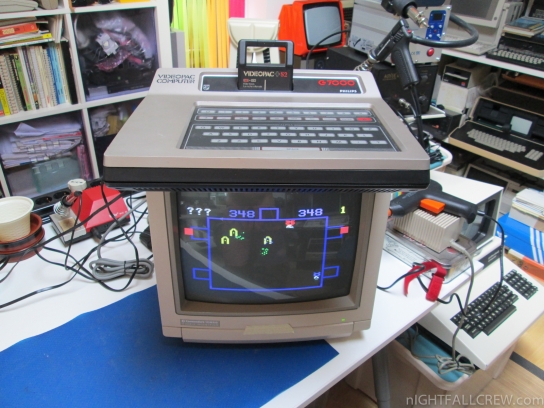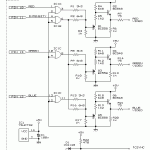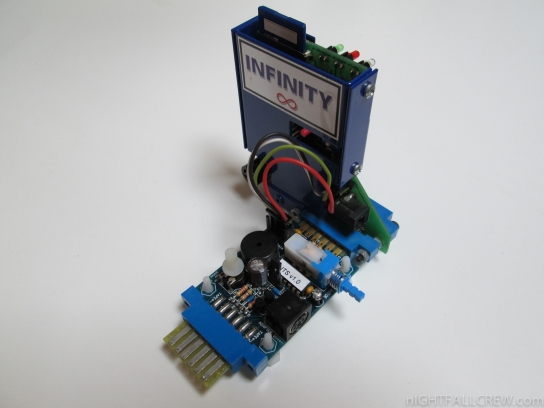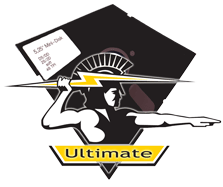I have decided to repair my Coleco Vision Secam version (RGB) purchased some years ago in a full working state, today is died. Below a description of the defect and of components being replaced.
Defect: dirty sprite
I have received this computer in excellent cosmetic condition but unfortunately with some dead keys of the keyboard.
The trick of the repair is cleaning the two little strips and the small conductive button (see the photos)
 This is the official demo party results from Nordlicht 2013 (Top 3 Entries only). See also the Nordlicht 2013 homepage for more informations.
This is the official demo party results from Nordlicht 2013 (Top 3 Entries only). See also the Nordlicht 2013 homepage for more informations.
Mixed:
- Pimmelsafari by Metalvotze (Game)
- Return of the Jedi (Game)
- Hubbard Selector by Peiselulli (Music Collection)
Mixed Graphics:
- Night Walk by Arsenic, Oxyron
- Mind Collapse by Tristar & Red Sector Incorporated
- Never Trust a c64 by Rabenauge
Mixed Music:
- Lauter by dEViLOCk
- N0rdl1cht 2013 by fieserWolf
- Two Reds For One Blues by Mayday!
Mixed Demo:
- Natura Morta by Tristar & Red Sector Incorporated
- Zeropage Gravity by Tristar & Red Sector Incorporated
- Call of the Past by Arsenic
Productions released outside compos:
- D71 Ultimate V0.2 (Tool)
- Demo of the Year 2013 by Phantasy/Hitmen/Laxity/Alpha Flight/Fossil/Oxyron/Chorus/Camelot/Censor Design (Demo)
Download: Nordlicht 2013 full Party stuff (1121)
source: noname.c64.org/csdb nordlicht.demoparty.info
I have received from a friend a couple of components that can be used as spare parts for the repairs. Thanks Andrea.
Close-up description:
- 1 x Commodore CBM 4040 Dual Floppy Disk Drive PCB
- 1 x Commodore CBM 8050/8250 Dual Floppy Disk Drive PCB
- 2 x Texas Instruments TI-99/4A PCB
- 1 x Main powersupply of Commodore CBM 4040/8050/8250 Dual Floppy Disk Drive.
- 1 x Sinclair ZX Spectrum+
- 1 x Sony HB-10P MSX

Details:
I have found this RGB mod for the Philips Videopac G7000 console fom the gamesx site and i have decided to build the circuit to see if it works.
This mod is not easy to do, especially if one has no experience in electronics, however the result at the end is spectacular.
RGB DAC Schematics (click to zoom):

Download: Philips VideoPac G7000 Schematics (1965)
source: gamesx.com
 The HxC Floppy Drive Emulator is a software and hardware system created by jfdn aka Jeff.
The HxC Floppy Drive Emulator is a software and hardware system created by jfdn aka Jeff.
The aim of this project is to replace the floppy disk drive by an electronic device emulating the floppy disk drive (list of supported Computer/Hardware).
There are two differents emulators:
- A USB version which allows to connect the floppy disk drive interface of the computer to a PC via a USB cable.
- A SDCARD version which allows to emulate floppy disks which images are stored in a SDCARD.
Release notes for the HxCFloppyEmulator software v2.0.15.1:
- FAT12 Loader/generator : Default file creation date set to 1985 to avoid issue with non year 2000 compatibles machines (Kawasaki JS30 robots…).
- Apple 2 Sectors generator : End of sector sync corrected, 6&2 GCR encoder corrected.
- Track viewer : Sectors on track boundary display issue corrected.
Download:
source: hxc2001.free.fr lotharek.pl
 The HxC Floppy Drive Emulator is a software and hardware system created by jfdn aka Jeff.
The HxC Floppy Drive Emulator is a software and hardware system created by jfdn aka Jeff.
The aim of this project is to replace the floppy disk drive by an electronic device emulating the floppy disk drive (list of supported Computer/Hardware).
There are two differents emulators:
- A USB version which allows to connect the floppy disk drive interface of the computer to a PC via a USB cable.
- A SDCARD version which allows to emulate floppy disks which images are stored in a SDCARD.
HxC Floppy Emulator DOS Disk Image Browser:
The HxC Floppy Emulator DOS Disk Image Browser is a simplified version of the HxC Floppy Emulator software. This version is designed to replace the VFD solution.
Avantages over the VFD solution:
- No driver installation needed.
- Support of 3 mode DOS floppy disk image (1KB sector size) (For PC98 based CNC machines).
- Support of special/custom DOS floppy disk image (2.5MB,4.5MB,6.78MB…)
- Ready to be used on non-windows systems (Mac, Linux,…) ! ;)
- Simple use !
Release notes for the HxCFloppyEmulator software v2.0.15.0:
- New Loader: SpeccyDos *.SDD support added
- New Loader: Apple 2 DOS 3.3 (*.DO) & ProDOS (*.PO) raw file image added.
- New Writer: HFE file with the HDDD A2 support for Apple II (http://www.bootzero.com/HDDD_A2_v1.2/HDDD_A2v1.2.html)
- New Writer: Atari ST MSA file.
- New Writer: TRS 80 *.JV3 file. (Done by David Barr ! Thanks to him :) )
- New Writer: TRS 80 *.DMK file.
- New Writer: PC88 *.D88 file.
- FAT12 Loader/generator: Atari ST 902KB format corrected.
- FAT12 Loader/generator: Atari ST 4.23MB format corrected.
- HFE File Writer: Track padding function corrected.
- EDE File Loader: edt & edv file support added, ASR 10 gap3 adjusted to 36.
- JV3 File Loader: Sector interleaving correctly implemented.
- IMD File Writer: No allocated sector issue corrected.
- XDMS Lib: UTF8 path support added.
- LIBSAP Lib: UTF8 path support added.
- New Track/Sector support: GCR “6 and 2″ Apple II DOS 3.3/ProDos.
- FAT12 Disk Browser: Handle freeing corrected
- GUI – Drag & Drop Support: URI type path support added (Linux).
- GUI – Track viewer window: New buttons to enable/disable track format analysis.
- GUI – Log window: New buttons to enable/disable logs messages.
- Raw Loader – Predefined raw formats added:
- Roland W30/S330/W50/S50/S550 DD Floppy Disk.
- OS9 1280KB Floppy Disk.
- Linn/Forat 9000 Floppy Disk.
- KORG T3 3″5 HD Floppy Disk.
- Atari ST 3″5 DD Floppy Disk
- Standard 3″5 DOS ED Floppy Disk
- Special 2.5MB DOS EXHD Floppy Disk
- Special 4.5MB DOS EXHD Floppy Disk.
- Special 6.78MB DOS EXHD Floppy Disk.
- Updated:
- Ensoniq EPS 3″5 HD Floppy Disk : Gap3 adjusted.
- Standard 3″5 DOS HD Floppy Disk : Gap3 adjusted.
- Standard 3″5 DOS DD Floppy Disk : Gap3 adjusted.
Download:
source: hxc2001.free.fr lotharek.pl
This gallery shows some stages of cleaning the Commodore CBM 8050 Dual Drive Floppy Disk. Below the defects and replacement parts.
Defect:
- Died – Status LED: RED (5 Flash) Zero page error.
Replacement parts:
- 1 x 6502
- 1 x 6532
- 1 x 6522
- The connectors of write enable sensors are inserted incorrectly.
- Missing +5v on the PCB of the sensor circuit.
- Dirtiness in the write enable sensor drive 0
- Cleaning floppy drive heads.
- Cleaning belt of the floppy drive.
- Removing the filter capacitor.
- The Analog PCB of the Floppy Drive is not fixed properly.
- The Locking screws of the external box are not original.
- Lost the felt which push the Floppy Disk vs the head.
- Disk is present (Switch Motor) dirty.
- General Cleaning.
Test formatting floppy disk:
 CBM prg Studio Version 2.7.0 is released. There are a lot of new features in this version. I’d really appreciate it if you report any bugs you find or have any suggestions/comments.
CBM prg Studio Version 2.7.0 is released. There are a lot of new features in this version. I’d really appreciate it if you report any bugs you find or have any suggestions/comments.
CBM prg Studio allows you to type a BASIC or Machine Code program in using a nice Windows environment and convert it to a ‘.prg’ file which you can run on an emulator, or even a real C64 / VIC20 or PET if you’re feeling brave and have the right kit.
CBM prg Studio is the result of merging C64PrgGen and VIC20PrgGen. Adding new features and fixing bugs in two apps which were 95% similar was a bit of a nightmare so merging them made sense.
It was also a good opportunity for a face lift and to add some new features, such as:
- Programs are project based, meaning all related source files, sprite files etc. are kept in one place and multiple source files can be linked more easily.
- Tabbed MDI.
- Syntax highlighting.
What CBM prg Studio isn’t is a front-end for tok64, cbmcnvrt, bastext or any other tokeniser / detokeniser / assembler. It’s all been written completely from scratch.
New features:
- Debugger:
- Keyboard shortcuts.
- Instruction cycle counter.
- Overlay files.
- VICE Snapshot files (for C64 and VIC 20 only).
- Better execution control, e.g. step over, into etc.
- Change SP and SR registers.
- Memory viewer.
- Much better performance.
- Updated tutorial.
- Character editor:
- Edited characters indicator.
- Copy groups of characters.
- Scroll the scratchpad.
- BASIC:
- Batch mode added.
- Constants can be defined/redefined in code, and use hex values.
- Auto line numbering inproved.
Bugs fixed:
- ‘£’ was in invalid BASIC character.
- $(nn),y was not being assembled properly, whereas ($nn),y was.
- Casted offsets (offsets which are based on other offsets) were broken.
- Problems renumbering BASIC programs with ON..GOTO/GOSUB with spaces in the line number list.
- PC relative offsets (e.g. bvc *-2) fixed.
- ‘Align’ directive not working.
- Load/save in character editor.
- Multicolour issues with the screen/character/sprite editors.
- Including sprite files (IncBin) into assembly source only generated 63 bytes.
See the help for a complete list of new features and fixed bugs.
Download: CBM prg Studio v2.7.0 (1016)
source: ajordison.co.uk
 Some new games (Cracked / Trained or Unrealeased) for Commodore 64 have been released from your favorites groups: Alpha Flight, Nostalgia, Dév, The Mad Scientist, Dinasours, Didi, Unreal, The Hidden Farts and Laxity.
Some new games (Cracked / Trained or Unrealeased) for Commodore 64 have been released from your favorites groups: Alpha Flight, Nostalgia, Dév, The Mad Scientist, Dinasours, Didi, Unreal, The Hidden Farts and Laxity.
Download:
source: csdb.dk

Autopsy:
I have to thank my friend Damiano for sending me the ITS Module with a low serial number, which like the previous one (C64SD v2.0) i really appreciate it.
The ITS module is a interface that enables SD2IEC to play .TAP files version 1 and version 2 to a commodore machine. The ITS module was designed to fit into the pass-through tape connector of C64SD Infinity and to be connected to the C64SD by a four wires cable that allows C64SD to manage it.
SD2IEC firmware has been modified in order to add the commands and the routines needed to control the external ITS module without removing any of the original SD2IEC functionalities
Features:
- Play back any V1 or V2 standard .TAP files in order to load them into a commodore machine belonging to the “classic” or “264” series including: VIC-20, VC20, C64, C16, C116, C128 (all
- versions) and Plus/4. Note: some models of C128D doesn’t have the tape edge-card connector, of course ITS is not compatible with these machines.
- Rebuild the original tape grabbed into all the .TAP version 1 and for most of the version 2
- Work permanently connected between the tape port of the commodore computers and the corresponding datassette (either 1530 white model flat plug or 1531 black model mini-din plug) acting
- As a pass-through transparent gateway or activated in order to play back .TAP files: no need to connect and disconnect the module to use your datassette.
- Play back .TAP content with optimal accuracy and completely in digital format without the hassle of file conversions or level adjustment
- Simulate tape motor activation logic fully so that the play back of the tape is managed as it would be in a real C2N tape. An override button has been provided able to stop the play back of the “virtual tape” at any time when necessary.
- Work with either 1530 (White model, flat plug) datassette recorder as well as with 1531 (Black, mini-din plug) datassette
- Load .TAP with multiple programs recorded one after the other (like the classic tape compilations sold in the 80′s)
What Can’t You Do:
- Create a .TAP file representing the content of a Tape (i.e. ITS is not a “tape content grabber”)
- Fix the content of a TAP file in case it’s broken. Broken .TAP won’t load on your Commodore box. Since there are literally thousands of utilities to create and manipulate .TAP files there is the possibility to come across non-standard or incorrect .TAP files.
- Play back the content of .TAP of version V0. Use an utility to convert V0 .TAP files to V1 such as TapClean then you will be able to use the converted .TAP file with ITS module.
- Manage programs saved on tape that are based on the tape-counter management or on the time of wind-rewind of the tape.
The ITS Module can be purchased on the Manosoft site.
ITS Tape Loading video:
source: manosoft.it
 This is the official demo party results from Silesia Party 7 (Top 3 Entries only). See also the Silesia Party homepage for more informations.
This is the official demo party results from Silesia Party 7 (Top 3 Entries only). See also the Silesia Party homepage for more informations.
C64 Demo:
- 1. “Quadrangulus 80%” Dream
- 2. “B-Land Scrapbook” Samar
C64 4K Intro:
- 1. “One Flew Over The Cuckoo’s Nest” Samar
- 2. “Big Blue” Vulture
C64 Graphics:
- 1. “S7″ CRRN/Elysium
- 2. “Masks” Questor/Albion
- 3. “Waiting For Silesia” Joodas/Albion
C64 Music (1SID):
- 1. “Human Hunting” Randall/Arise
- 2. “In A Rush” MCH/Genesis Project
- 3. “Cow Anus Fucked” Surgeon/Vulture
C64 Music (2SID):
- 1. “Love Fileosophy” GRG/Shape
- 2. “Last Party” Buddha/Vulture
- 3. “Blank Page, Part 3″ Conrad/Samars.
C64 Sample Music:
- 1. “Sandmonster” MCH/Genesis Project
- 2. “Chemoglobina” Bab00n/Brownhole
- 3. “Kanikurwy” Raf/Vulture
Wild competition:
Download: Silesia Party 7 full Party stuff (1127)
source: noname.c64.org/csdb silesiaparty.pl
 This is a firmware hack of the version 2.6d build for the 1541 Ultimate Plus (MK1) by Bradon (forum link).
This is a firmware hack of the version 2.6d build for the 1541 Ultimate Plus (MK1) by Bradon (forum link).
The latest official version for the 1541 Ultimate Plus (MK1) is the version v2.4a.
Note from the author:
After much frustration, I finally managed to get a working build environment for the 1541U firmware.
My 1541U is a MK1 Plus unit (no network). The last revision of the firmware I could compile is 2.6d, SVN revision 131. Starting with 132 it seems that the content is too much for the older FPGA. I started to look into removing cart ROMs I don’t use and gave up realizing this would be too much to do in my spare time, since their offset locations are hardcoded.
I removed the “too old” warning check so it will boot up without having to dismiss a warning.
So far it seems to work correctly. I don’t know if the FPGA revision check really matters for this revision or not. It would appear Gideon has no desire to continue supporting MK1 units since building for them is not possible with the latest revisions. This is of course fine with me (I don’t expect he will forever and ever try to make it work on older units), I just wanted the most recent build possible.
Changes:
- Added F3 help screen to show 1541U commands.
- Modified the file viewer so that scrolling will not advance past the last line.
- Added F1 and F7 page up/down to the file viewer.
- Modified behavior of the file browser so that when you cursor-right on an item with no children, the context menu is brought up as if you pressed return.
Download: 1541 Ultimate (MK1) v2.6d.o918r4 (1358)
source: 1541ultimate.net
I have decided to repair my two ColecoVision consoles bought like non-functioning many years ago. Below a description of the defects and of components being replaced.
Defect: black screen
- 1 x 2114 (VRAM)
- Joystick port # 1 broken (replaced with the joystick port of a Texas Instruments TI-99/4A)
Defect: black screen
- 1 x 2114 (VRAM)
- 3 x 4116 (RAM)
 Some new games (Cracked / Trained or Unrealeased) for Commodore 64 have been released from your favorites groups: Onslaught, INFERIOR Software International, Antarctica and Laxity.
Some new games (Cracked / Trained or Unrealeased) for Commodore 64 have been released from your favorites groups: Onslaught, INFERIOR Software International, Antarctica and Laxity.
Download:
source: csdb.dk





























 The HxC Floppy Drive Emulator is a software and hardware system created by jfdn aka Jeff.
The HxC Floppy Drive Emulator is a software and hardware system created by jfdn aka Jeff.






















 This is a firmware hack of the version 2.6d build for the 1541 Ultimate Plus (MK1) by Bradon (
This is a firmware hack of the version 2.6d build for the 1541 Ultimate Plus (MK1) by Bradon (


















Recent Comments